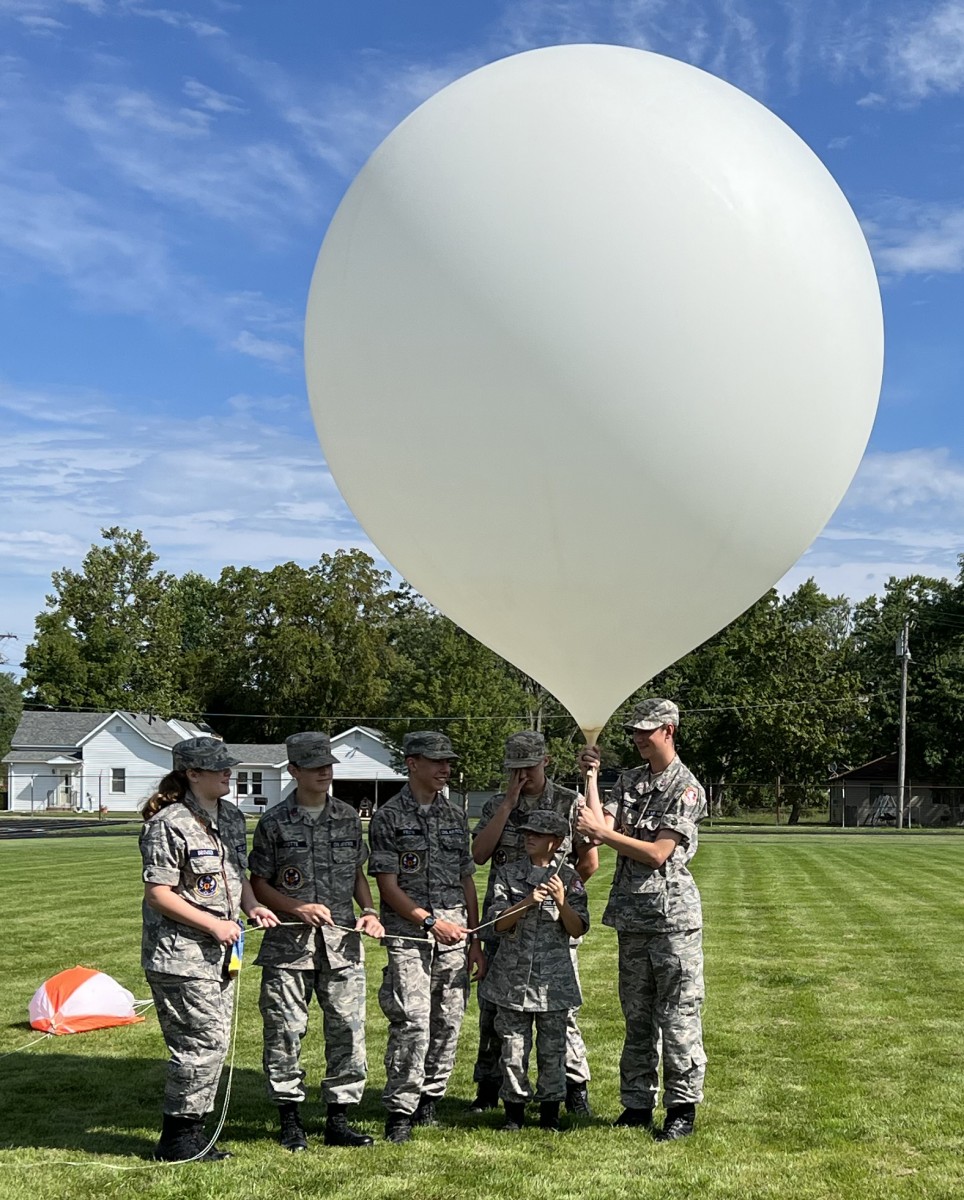High-Altitude Balloon Challenge Experiments Launched, Recovered

 More than 500 Civil Air Patrol cadet teams’ scientific experiments soared skyward Aug. 13 in north central Indiana for Civil Air Patrol’s second national Aerospace Education High-Altitude Balloon Challenge.
More than 500 Civil Air Patrol cadet teams’ scientific experiments soared skyward Aug. 13 in north central Indiana for Civil Air Patrol’s second national Aerospace Education High-Altitude Balloon Challenge.
Participating cadets from 122 squadrons representing all eight regions designed experiments for launching to the stratosphere in 50-milliliter test tubes on high-altitude balloons. The experiments were carried aloft as payloads in three balloons, ascending to heights from 98,663 feet-105,661 feet before falling back to Earth for recovery.
Cadets and senior members from both the Indiana and Kentucky wings helped prepare and release the balloons at Anderson Preparatory Academy in Anderson, Indiana. The Indiana Wing conducted a search-and-rescue exercise during the day with air and ground teams tracking and retrieving the balloons. Two airplanes and drones took to the skies while the ground teams located and returned the payloads for shipment back to the squadrons for after-flight analysis of the experiments.
Cadets assisted representatives from NearSpace Education, a national STEM (science, technology, engineering, and math) initiative, in preparing and releasing the balloons at Anderson Preparatory Academy in 
 Anderson, Indiana.
Anderson, Indiana.
The CAP contingent present totaled 38 members from the Indiana and Kentucky wings and National Headquarters.
After 90 minutes of of tracking the balloons’ steady rise, mission base detected the first drop in a balloon’s altitude. The other two balloons followed shortly afterward.

Once the balloon payloads reached the ground following free fall and a parachute deployment, crews rushed to the landing sites. Searchers began by using GPS coordinates from the balloon payloads’ transmitters.
Mission base directed aircrews on where to search and sent out sUAS and ground teams for more closer looks at the same areas. All launched payloads were safely returned to mission base.
As with the inaugural challenge a year ago, retired U.S. Air Force Col. Joe Kittinger, famed pioneering high-altitude balloon scientist, is again providing the $5,000 prize and Kittinger Cup for the cadet team achieving the highest composite scores as determined by a panel of judges.
Kittinger viewed the Indiana launch online from Orlando, Florida, along with a group of local Civil Air Patrol cadets.
Winning teams will be chosen after teams submit a documentary-style four-to-five-minute video Sept. 26 describing their experiments and their participation in the competition.
The first challenge was won by a team of four Massachusetts Wing cadets – two each from the Bridgewater State University Composite Squadron and Goddard Cadet Squadron.
_____
Senior Member Harel Halevi
Assistant Public Affairs Officer
Indiana Wing

